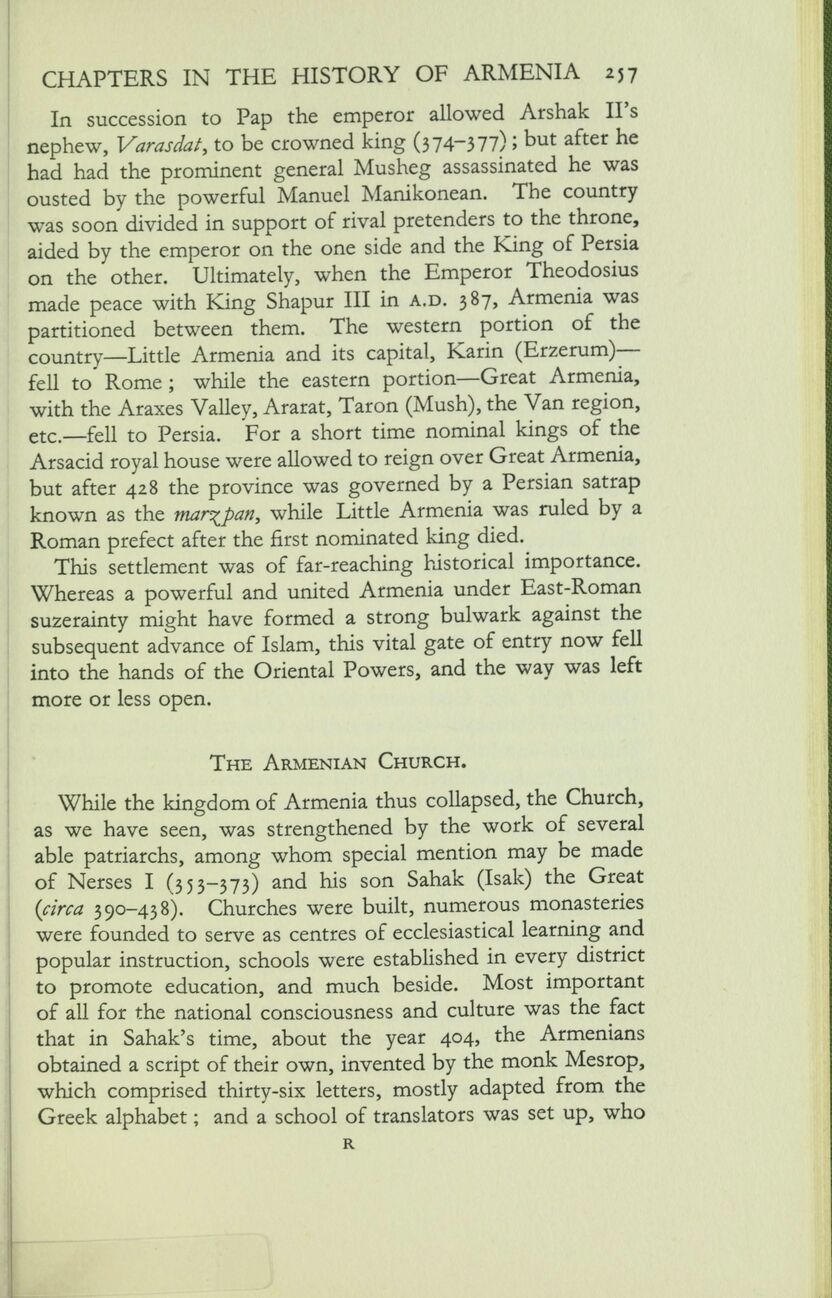
Full resolution (JPEG) - On this page / på denna sida - X. Chapters in the history of Armenia

<< prev. page << föreg. sida << >> nästa sida >> next page >>
Below is the raw OCR text
from the above scanned image.
Do you see an error? Proofread the page now!
Här nedan syns maskintolkade texten från faksimilbilden ovan.
Ser du något fel? Korrekturläs sidan nu!
This page has never been proofread. / Denna sida har aldrig korrekturlästs.
CHAPTERS IN THE HISTORY OF ARMENIA 257
In succession to Pap the emperor allowed Arshak IFs
nephew, Varasdat, to be crowned king (374~377) \ but after he
had had the prominent general Musheg assassinated he was
ousted by the powerful Manuel Manikonean. The country
was soon divided in support of rival pretenders to the throne,
aided by the emperor on the one side and the King of Persia
on the other. Ultimately, when the Emperor Theodosius
made peace with King Shapur 111 in a.d. 387, Armenia was
partitioned between them. The western portion of the
country—Little Armenia and its capital, Karin (Erzerum)—
fell to’ Rome ; while the eastern portion—Great Armenia,
with the Araxes Valley, Ararat, Taron (Mush), the Van region,
etc.—fell to Persia. For a short time nominal kings of the
Arsacid royal house were allowed to reign over Great Armenia,
but after 428 the province was governed by a Persian satrap
known as the mar^pan, while Little Armenia was ruled by a
Roman prefect after the first nominated king died.
This settlement was of far-reaching historical importance.
Whereas a powerful and united Armenia under East-Roman
suzerainty might have formed a strong bulwark against the
subsequent advance of Islam, this vital gate of entry now fell
into the hands of the Oriental Powers, and the way was left
more or less open.
The Armenian Church.
While the kingdom of Armenia thus collapsed, the Church,
as wc have seen, was strengthened by the work of several
able patriarchs, among whom special mention may be made
of Nerses I (353-373) and his son Sahak (Isak) the Great
(area 390-438). Churches were built, numerous monasteries
were founded to serve as centres of ecclesiastical learning and
popular instruetion, schools were established in every district
to promote education, and much beside. Most important
of all for the national consciousness and culture was the fact
that in Sahak’s time, about the year 404, the Armenians
obtained a script of their own, invented by the monk Mesrop,
which comprised thirty-six letters, mostly adapted from the
Greek alphabet ; and a school of translators was set up, who
R
<< prev. page << föreg. sida << >> nästa sida >> next page >>